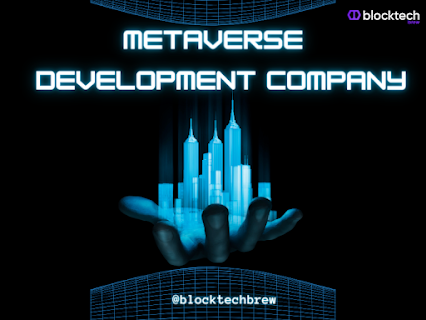How are metaverse games developed?
The metaverse has become an increasingly popular topic in recent years, with virtual worlds and online games becoming more immersive and interactive than ever before. Metaverse games, in particular, have gained a lot of attention due to their ability to create engaging and seamless experiences for players. But how are metaverse games developed? In this article, we'll explore the process of developing a metaverse game and the important role that developers play in this process.
Understanding Metaverse Games
Before we dive into the development process, it's important to have a clear understanding of what a metaverse game actually is. Simply put, a metaverse game is a virtual world that allows players to interact with each other and the environment in a seamless way. These games use advanced technology to create immersive experiences that feel almost like real life.
Metaverse games typically have a large and open-ended environment that allows players to explore and interact with a variety of objects and structures. They also often include social features that allow players to connect with one another and engage in collaborative activities. These games can be accessed through a variety of devices, including computers, consoles, and even virtual reality headsets.
The Development Process
Developing a metaverse game is a complex process that requires a variety of skills and tools. Here are the key steps that developers typically follow when creating a metaverse game:
Conceptualization and Design
The first step in developing a metaverse game is to come up with a concept and design. This involves brainstorming ideas for the game, identifying the target audience, and creating a plan for how the game will work.
During this phase, developers will also design the environment and characters that will be used in the game. They may use tools like 3D modeling software to create detailed models of the game's assets, and they'll also need to design the user interface and controls.
Programming and Implementation
Once the game design is finalized, the next step is to begin programming and implementing the game mechanics. This involves writing code to create the game's various systems, such as the physics engine, artificial intelligence, and networking.
Metaverse game developers may use a variety of programming languages and tools, depending on the specific requirements of the game. They may also use game engines like Unity or Unreal Engine, which provide a set of pre-built tools and systems that can be used to speed up the development process.
Testing and Refinement
After the game mechanics have been programmed, the next step is to test the game and refine it based on user feedback. This involves identifying and fixing bugs, adjusting game mechanics and balancing, and ensuring that the game runs smoothly on a variety of devices and platforms.
Metaverse game developers may use a variety of testing tools and techniques, such as automated testing, user testing, and stress testing, to ensure that the game is as stable and bug-free as possible.
Launch and Post-Launch Support
Once the game has been tested and refined, the final step is to launch it and provide ongoing support to players. This involves marketing the game to potential players, providing technical support and updates, and continuing to refine the game based on user feedback.
The Role of Metaverse Game Developers
Metaverse game developers play a crucial role in the development of these immersive and engaging games. They are responsible for designing and implementing the game mechanics, creating the virtual environment and characters, and ensuring that the game runs smoothly and is bug-free.
To do this, metaverse game developers must have a wide range of skills and knowledge, including proficiency in programming languages and tools, 3D modeling and animation, game design and mechanics, and user interface and experience design. They must also be able to work well in teams, communicate effectively with stakeholders, and adapt to changing technologies and trends.
In addition to technical skills, metaverse game developers must also have a deep understanding of game design and mechanics. They must be able to create game systems that are engaging and fun to play, while also being balanced and fair. They must also be able to design virtual environments that are immersive and believable, with attention to detail and creativity.
Metaverse game developers must also stay up-to-date with the latest technologies and trends in the gaming industry. This means keeping an eye on emerging technologies like virtual and augmented reality, as well as new developments in programming languages and tools. They must also be familiar with the latest games and trends in the industry, so they can create games that are fresh and exciting.
Conclusion
Metaverse games are a new and exciting development in the world of gaming. They offer immersive and engaging experiences for players and require a complex set of skills and tools to develop. Metaverse game developers play a critical role in the development process, from conceptualization and design to programming and implementation, testing and refinement, and ongoing support.
To be successful in this field, developers must have a deep understanding of game design and mechanics, as well as proficiency in programming languages and tools, 3D modeling and animation, and user interface and experience design. They must also stay up-to-date with the latest technologies and trends in the industry, to create games that are fresh and exciting.




Comments
Post a Comment